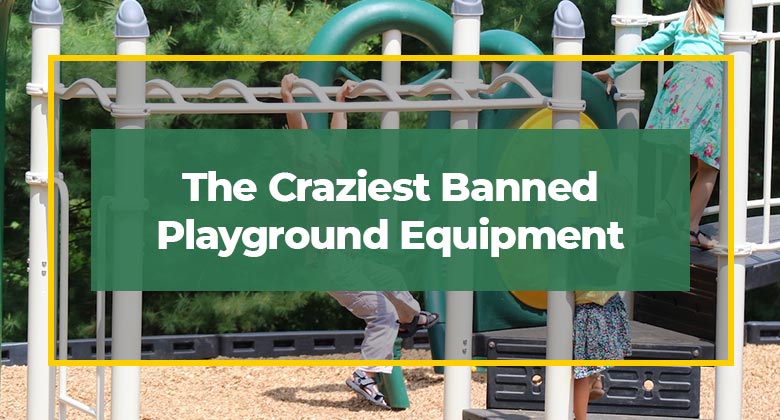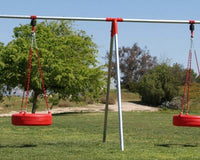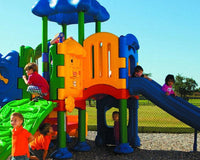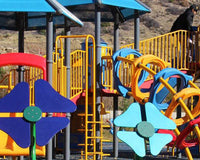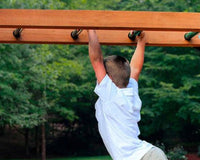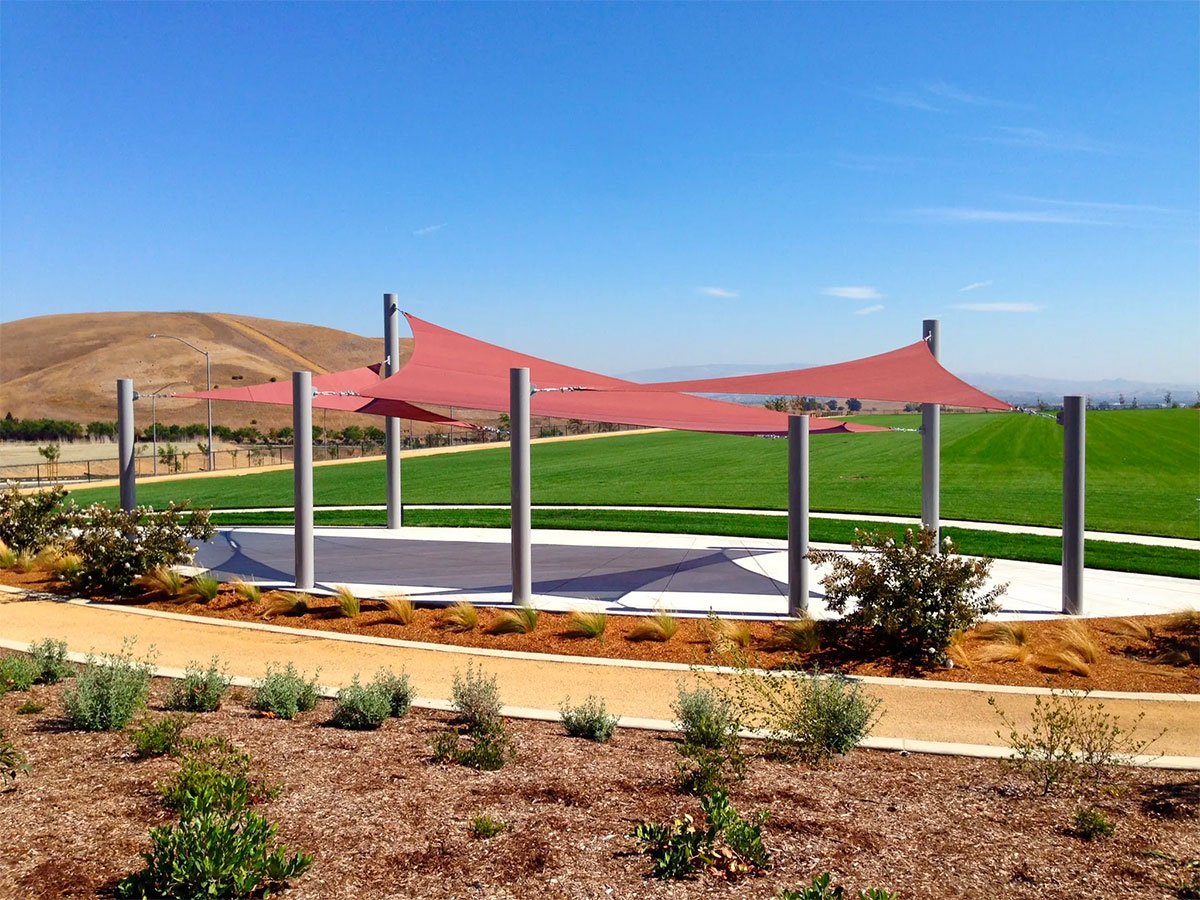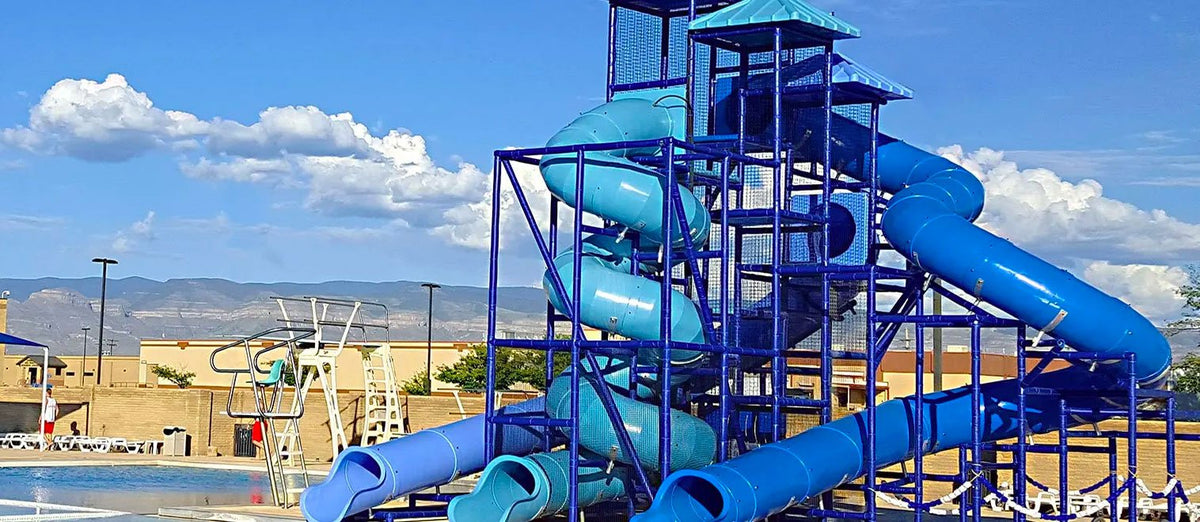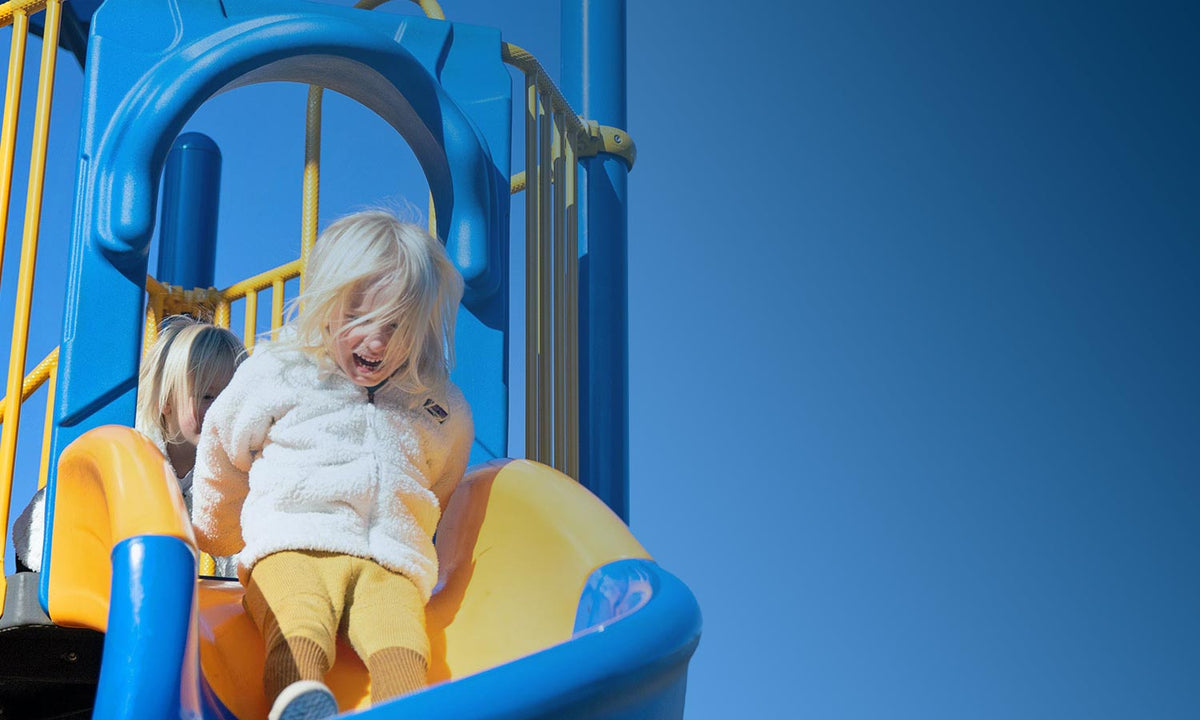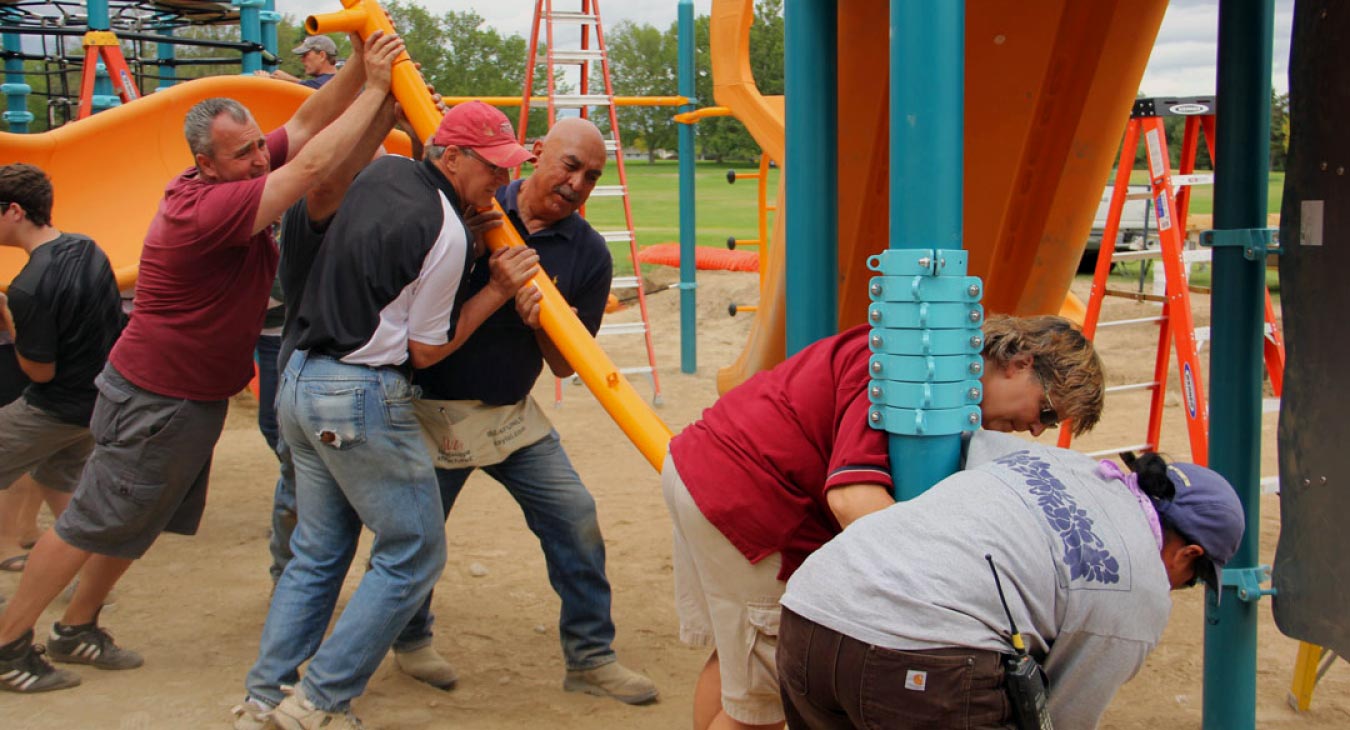The Craziest Banned Playground Equipment
Playground equipment continually faces updates and changes to improve child safety and fun. However, looking back over banned playground equipment can help explain the necessary improvements and how far we’ve come.
Here, we’ll take a look at ten of the craziest banned playground equipment that probably shouldn’t have existed in the first place.
Why Playground Equipment Gets Banned
Banning old playground equipment can happen for several reasons, but the primary cause is safety. In the past, playground equipment did not have standards or safety tests before becoming a staple in the schoolyard. Nowadays, each playground item needs to be subject to regulations to prevent children from getting hurt.
Sometimes the materials used can make an unsafe playground. For instance, in the 1990s and 2000s, it was fairly common to find wooden playgrounds all over the place.
But, wooden playgrounds often result in children getting splinters, sometimes very bad ones at that. Due to this problem, and the fact that wooden play areas require more maintenance, wood is no longer the preferred material of choice for playgrounds.
Like wood, other materials are no longer part of play areas due to potential risks. Concrete, gravel, lead paint, and heavy metal objects can cause concussions, abrasions, lead poisoning, blood poisoning, and more health issues. Complaints from parents have helped standards to be set for a safer playtime for everyone.
Similarly, older playground equipment presented difficulties for children with disabilities. This inaccessibility has since undergone review, resulting in redesigned playgrounds that allow more children of different abilities to enjoy them.
Safety Standards: Then vs Now
In earlier years, safety standards tended to focus on certain elements while ignoring others. For instance, during the 1920s and 1930s, playground equipment focused on eliminating rivets that could catch clothing, skin, and hair.
Since then, the Consumer Product Safety Commission (CPSC) has expanded these standards in many directions, such as providing rubber mulch for playground floors to help prevent head injuries.
Over time, it has come to the attention of parents everywhere, and the CPSC, that children do not always use playground equipment as intended. Because of this, the potential for injury increases. Previously, playground equipment manufacturers did not consider what would happen if a child fell off their equipment. They often fixed their contraptions in concrete to prevent them from collapsing on the children.
Nowadays, both the sturdiness of the equipment and the surface it resides on go under consideration. Similarly, standards that include the layout, materials, and overall design of the equipment require careful consideration before becoming accepted.
Top Ten Banned Pieces of Equipment
These top ten examples of banned playground equipment can give you an idea of how far we’ve come in terms of safety.
1. Swinging Gates
Swinging gates featured a metal or wooden gate attached to a single pole. The idea was to hold on to the attached bar and use your body weight to swing yourself and your gate around the pole. These gates occasionally came with a board at the bottom to stand on.
However, sometimes they didn’t, and the rider would have to hold on for dear life, perhaps jamming their toes in between the gate slats for grip.
The problem with swinging gates was the lack of control. Kids would hop up and try to hang on, but the jerky movements of the gate made it hard not to fall off. Plus, if a lot of kids were crowding around, one or two could get hit by the swinging motion of the gate.
These gates were more often metal than wood, and getting whacked with a heavy metal structure is dangerous even if you’re not a small child.
Nowadays, swinging equipment that isn’t so risky has taken the place of the swinging gate.
Want to find something safer?
2. Giant Strides
Most prominent in the 1930s, the Giant Strides was a new take on the popular maypole. A maypole featured an upright pole with ribbons attached to the top. Children could grasp the ends of these ribbons and dance around the pole, weaving in and out of each other as they went.
The Giant Strides kept the upright pole but replaced the ribbons with rope swings attached to a spinning mechanism. The idea was that children could run around the pole and leap into the air for a brief moment of flight, similar to Dangler Swings, popular in amusement parks.
Unfortunately, this banned playground equipment required lots of coordination and cooperation to be successful. Children could easily crash into the center pole or each other, leading to bruises, abrasions, and even concussions. Eventually, the Giant Strides was no longer trustworthy as a playground staple.
3. Log Swing
The log swing consisted of a long seat with two handles that would swing, like a log, back and forth in a straight line. However, it was also capable of swinging haphazardly from side to side, with one end leading the other.
This mobility provided a lack of control that could be enjoyable for the rider but posed a threat to any unsuspecting bystander. It also made it more possible to whack into the legs of the equipment, which could cause injury to anyone swinging.
At the time, it was also incredibly popular for a huge number of children to pile on at once. As many as fourteen children would cram onto the log and swing together. This crowding made the swing more dangerous, as it made it more possible to fall off of and brought even less control to the log’s movements.
4. Teeter Ladder
Manufacturers thought this combination of monkey bars and teeter-totters was beneficial towards athletic growth. The structure consisted of two ladders attached to a horizontal bar some feet above the ground. One ladder sat above the bar, and the other one sat below. Both ladders could tip up and down, depending on how much weight was on one side or the other, just like an upside-down teeter-totter.
A single child could swing their way from one end to the other of either ladder, but when passing the center, the ladder would tip jarringly. Two children on either end could use a ladder like a teeter-totter, but it was easy to fall off.
As teeter-totters are mostly obsolete today, it’s easy to see that this version has not held up either.
Want to find something safer for your playground?
Check out our seesaws and teeter totters!
5. Poised Safety Swing
Meant for launching the swinger into a lake or pool, the Poised Safety Swing was not as safe as the name. The contraption had a tall ladder, at the top of which you would get onto the swing. A foot-release would send you swinging down from the ladder and up into the air. At this point, you could either continue to swing or leap off into the water.
First released in 1927, users assumed this swing was safe so long as it launched the swinger into at least four feet of water. However, launching could be difficult as the swing could potentially hit the swinger if they didn’t leap correctly.
You could also potentially hit the swing’s frame if you lost control. The mechanism for holding the seat still while you got on was also potentially hazardous; if it failed, you might fall from the ladder and miss the water entirely.
Want to find something safer?
6. Racer Slides
No old-school playground was complete without at least one racer slide. Racer slides were tall, completely metal, and meant to fulfill any child’s need for speed. Unfortunately, though they were fast and adrenaline-inducing, they weren’t very safe. They were narrow and easy to fall off of, and their heights (some were as tall as thirty feet) made the drop extremely dangerous.
The ladders that led up to the top were also hazardous, as children could slip between the rungs onto the concrete below. The slides themselves often got painfully hot during the summer months, resulting in some children becoming burned.
Nowadays, slides are much shorter, much more accommodating, and are usually plastic instead of metal. Climbing up them is no longer scary or dangerous, and coming down doesn’t result in scalding your skin.
7. Witch’s Hat
A witch’s hat was similar to a merry-go-round, except it had the shape of a capital A. A single-center pole held up the construct, and a flimsy frame would spin around the outside. Children could run around the outside or hang on to the frame as it moved around the pole.
However, the witch’s hat became obsolete for being too unsafe. There was nothing to stop children from falling through the frame and landing inside. They could hit their heads on the pole or become trapped until the contraption finally slowed down and stopped.
There was also nothing to stop them from falling off on the outside, where they could fall with excessive speed onto a concrete floor.
Similar equipment still exists in playgrounds today, but they have undergone redesigns for increased safety. There are more handholds to keep children from falling off, there are floors to keep children from falling into the equipment, and the entire structure itself is much harder to move, meaning it can’t get up to dangerous speeds.
8. Animal Swings
Animal swings were large, metal swings in the shape of whimsical animals. Most were ducks or chickens and, usually, they came in bright colors. Originally, they were cute structures meant to appeal to young children. Unfortunately, their heavy stature made them more hazardous than fun.
Because the animal swings used flexible chains to attach themselves to the swingset, directing their path could be difficult. These swings could weigh as much as eighty pounds, and if they got off course you could find yourself crashing into your neighbor or the leg of the swingset itself.
The weight of the swings also presented a problem for pedestrians. If a child were to walk past while the swing was moving, they could easily receive a concussion, or worse, from getting struck by a sheep or rooster.
Also, the paint used on these swings often flaked off, leaving the potential for paint slivers. Though they were once commonplace, these animal swings no longer exist on today’s playgrounds.
Want to find something safer?
Check out our animal spring riders!
9. Barrel-of-Fun
First introduced in the 1920s, this now banned playground equipment had a safe reputation. The barrel-of-fun consisted of a large metal barrel that spun freely around a metal bar running through its middle.
The barrel sat two feet above the slab of concrete that bolted it in place. You could either try to hold on to it as it spun around and around, or you could practice somersaults over it, or even try and run along the top as it spun, very much like a log-roller.
Though this contraption advertised a smooth surface to eliminate catching on clothes or hair, it wasn’t a safe toy. The concrete that held it in place was a dangerous surface to land on, especially sitting so high above the ground. It was also nearly impossible to hold onto, and the speed it could reach while spinning meant it could throw children off at incredible rates.
Conclusion
Safety standards for playground equipment have undergone enormous changes in the last century.
While these changes have led to the banning of many previously accepted contraptions, they have also made playgrounds safer and more accessible for children everywhere.


